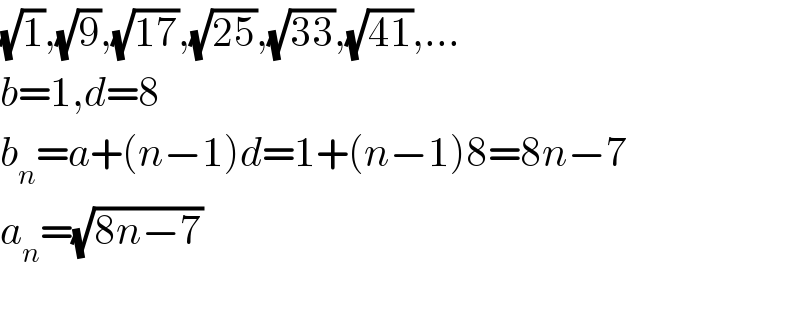
Question and Answers Forum
Question Number 56426 by Hassen_Timol last updated on 16/Mar/19

Answered by kaivan.ahmadi last updated on 16/Mar/19

Commented by Hassen_Timol last updated on 16/Mar/19

Answered by tanmay.chaudhury50@gmail.com last updated on 16/Mar/19

